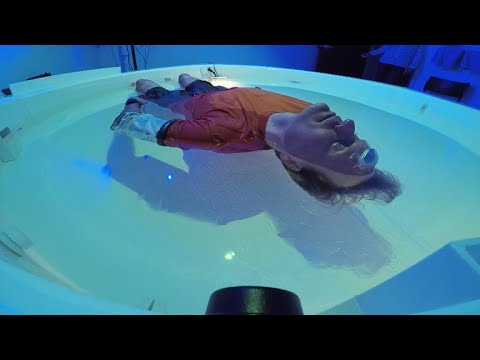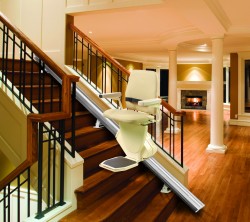Not long ago, people started wearing wristbands that recorded the number of steps they took, their heart rates and sleep cycles. But if the now-ubiquitous bands and accompanying apps that stored biorhythms started out as novelties, they paved the way for a new generation of gadgets that have become serious tools to improve health care delivery and outcomes. These newfangled contraptions will change how and where care is delivered and will enable providers to stay continuously connected with patients wherever they may be — or at least connected to the devices that indicate whether a patient is abiding by prescription protocols, getting up and about safely, and eating regularly. In some cases, they may even provide an early-warning system for serious degenerative conditions like Alzheimer’s and Parkinson’s disease.
The scope of these emerging technologies is breathtaking. High-tech sensors soon will monitor the at-home cardiac patient’s heart every minute of every day. A new type of chip, embedded in a pill will be activated at the precise moment it reaches a patient’s stomach, and will confirm for the medical record that he’s taking his medications. Straight out of science fiction, new gizmos will emerge that can scan a body for a host of symptoms without poking or prodding and, in seconds, they’ll make a diagnosis.
They may sound futuristic, but many of these devices already exist and, in fact, are being supplanted by a new generation of products that do it all faster and better.
For instance, wearable techno patches now can monitor a person’s heart rate, body temperature and other vital signs — a big leap over monitors that have to be hooked up — and their results read by the patient. The data are more robust and valuable because the patches provide “continuous monitoring instead of taking a periodic snapshot,” says Sean Chai, director of innovation and advanced technology services at Kaiser Permanente.
Another sensor under development will be capable of reading biomarkers, blood-borne chemical clues that signal the levels of stress and anxiety, which can affect health as much as disease, diet and daily activity do. If the stress-level data can be synchronized with vitals such as pulse and blood pressure, a patient will receive personalized feedback on what makes her tense and which relaxation techniques work for her. Steven Steinhubl, M.D., who directs the digital medicine program at Scripps Translational Science Institute, San Diego, calls this aid to stress control “the most exciting aspect of wearables, and I’m convinced it will happen. There are a lot of hurdles to overcome before it becomes extremely functional, but the capability is remarkable.”
Menu of innovation
Pick a medical issue — congestive heart failure, diabetes, medication noncompliance, even stressful isolation — and you’ll find researchers working to solve it with remarkable new technologies. Here are some areas they’re targeting:
Heart failure
This is Medicare’s most costly diagnosis, and the mortality rate is comparable to a new cancer diagnosis. The Scripps institute is testing three types of sensors — necklace, wristband and watch — that give both the patient and the care team continuous information on how a compromised heart is functioning. Medications can be adjusted and dietary recommendations can be made in real time that are specific to the individual. The sensors replace once-daily routines such as measuring a patient’s weight for signs of water retention, an indirect rather than direct measure of heart function.
Social influences
The ability to track a patient’s movements will help providers determine how social and environmental factors affect his or her health. The Kaiser institute is evaluating products that can analyze various components of a patient’s daily routine. Where does she eat breakfast and lunch? Does he interact with other people on a regular basis, or is he generally isolated? Correlating such personal information with vital signs can produce important insights into an individual’s well-being.
Medication compliance
An ingestible — and digestible — sensor is being rolled out to record whether and when a patient takes a medication. Developed by Proteus Digital Health, London and Redwood City, Calif., the chip uses gastric fluids as a power source, which means it turns on when it reaches the stomach. The sensor transmits the identity of the medication and the time it was taken to a skin patch, which then sends that info to an app on the patient’s mobile device. The patch also detects and transmits heart rate, activity and rest.
Timely diagnosis
Diagnostic tests to detect medical problems can be expensive and time-consuming for patients, and they have to be done one by one. A nonprofit organization called the XPrize Foundation is holding a $10 million competition to find a solution. Early next year, it will choose among 10 teams of finalists from around the world who are attempting to create a “tricorder,” named for the fictional device used to diagnose ailing characters in the “Star Trek” TV series.
Approaches vary among the competing teams but, at minimum, all devices are required to continuously monitor up to five vital signs for 72 hours, says Grant Campany, the foundation’s senior director. And they must be able to identify and diagnose up to 15 conditions as varied as stroke, AIDS, pertussis and chronic obstructive pulmonary disease.
3-D printing
Every geek’s jaw dropped at the sight of the 3-D printer when it first came to market. These days, medical researchers are harnessing its potential to vastly improve patient care. For example, Kaiser Permanente’s Los Angeles Medical Center is perfecting the use of 3-D printers to produce exact, multidimensional models of trouble spots inside patients. Surgeons can scrutinize and handle the models, then simulate a variety of possible procedures before ever going into the operating room.
This technology’s potential was dramatically demonstrated when a Kaiser patient suffered a tear in the wall of his aorta, the main artery leading out of his heart. The clinical team “printed his artery in 3-D and actually went through several different scenarios on how they could insert a stent to prevent further rupture,” Chai says. “They used that in a team-based training environment to see how they could confidently proceed with some of these special procedures.” Chai compares the process with a flight simulator in which a pilot masters the intricacies of the cockpit before entering a real one. The innovation “allows us to develop a more specialized, personalized, precise treatment plan,” Chai explains. “Ultimately, that improves the quality and affordability of care.” The patient, by the way, came through the procedure fine and is recovering.
The potential and how to reach it
Much of the emerging technology is aimed at getting inside the body without actually going inside it. “There is already significant interest in noninvasive data acquisition, whether that’s light imaging or infrared or sound waves,” says Peter Reinhart, director of the Institute for Applied Life Sciences, University of Massachusetts, Amherst.
Longer-range research is focused on capturing much more sophisticated information than current products can, Reinhart says. A promising example is a patch that uses a combination of electrical and chemical signals to identify either the predisposition to or the existence of a particular disease.
That would provide an enormous advantage when it comes to illnesses that involve brain and nerve degeneration, such as Alzheimer’s, Huntington’s or Parkinson’s disease. Instead of conducting a test and comparing results with a norm, as is done today, continuous tracking of certain biomarkers would establish a personal baseline while an individual is still healthy. Readings that significantly move off the baseline would signal declining cognitive activity before symptoms ever arise, and physicians would be alerted to do further tests. “Now you get a much earlier readout that something has just changed in your body, so let’s talk to someone,” Reinhart says.
To reach that potential, three things must happen: improvements in sensor technology; better interpretation of massive amounts of data in a medically relevant, rigorous way; and development of earlier intervention strategies. “As we get better and better at this, we’re going to find that new therapeutic options are going to be open to us,” Reinhart says. “Identifying an Alzheimer’s patient at the [observable] behavioral point, when 70 percent of the brain mass has already disappeared, really limits the number of therapeutic options you can provide that patient. If you could identify someone like that seven or eight years earlier, it now opens up a very different array of intervention strategies.”
The promise of personalized medicine to meet the unique needs of individuals depends on establishing baselines for each patient. To assess anxiety, for example, “One person’s stressor is another person’s idea of just an average day,” Reinhart says. “So just differentiating across individuals will be huge.”
That’s especially true with post-traumatic stress disorder. A lot of treatments have been shown to be effective, but they work differently for different people, says the Scripps institute’s Steinhubl. The emerging sensors will provide objective evidence of when someone is getting anxious, and how activities like meditating, reading a book, taking a walk or shooting baskets can ease the anxiety. “That can and will be life-changing,” he says. — John Morrissey is a freelance writer in Chicago.

Google glass aids trauma care
Trauma surgeons at the Forbes Hospital Trauma Center near Pittsburgh are testing Google Glass technology using a software called VIZR, Visual Info Zonal Reminder. Google Glass is a wearable technology with an optical head-mounted display that provides information in a smartphone-like, hands-free format. Wearers communicate with the Internet via natural language voice command. At Forbes, the technology initially is being used to provide prompts during patient resuscitation based on checklists similar to those used in the aviation industry. “With this new technology, surgeons will have hands-free, immediate access to critical information, checklists and reminders specific to injury categories that will greatly assist our efforts to provide effective, timely care that saves lives,” says Christoph R. Kaufmann, M.D., trauma medical director. For example, if a pregnant patient with injuries to the abdomen is in transport to the emergency department, the surgeon can use a voice command to access a checklist with crucial questions to ask the paramedic upon or even before the ambulance arrives.
Source: Allegheny Health Network

Press-and-print body parts
Last year, Cornell University scientists used a 3-D printer to produce an artificial ear that, according to Randy Reiland’s January 2014 report in Smithsonian.com, “looks and works like the real thing.” Reiland notes that researchers at the University of Pennsylvania and Massachusetts Institute of Technology have bioprinted blood vessels; their counterparts at Wake Forest University developed a method for printing skin cells directly onto wounds. And a company called Organovo has come up with a 3-D printed liver. Next up? According to Bernard Meyerson, writing for weforum.com, a 4-D printer is being developed capable of creating products that can alter themselves in response to environmental change, such as heat and humidity. That could be useful for things like clothes and footwear, Meyerson points out, and also for “health care products, such as implants designed to change in the human body.”
Source: Smithsonian.com, Jan. 6, 2014; World Economic Forum, weforum.org, March 4, 2015

Battery-powered germ-killers
As the number of joint replacement surgeries grows, so do concerns about the complications of infection from antibiotic-resistant superbugs. Biomedical engineers from the North Carolina State University Department of Industrial and Systems Engineering are developing nanotechnology built directly into orthopedic implants. A battery-activated device powers an army of microscopic germ-killers to fight bacterial infections, including methicillin-resistant Staphyloccus aureus, or MRSA. The process applies a low-intensity electrical charge to a silver titanium implant, releasing low-toxicity silver ions that kill or neutralize bacteria. The power source, similar to a watch battery, can be integrated into the implant design. The body’s own fluids act as a conducting medium between battery and silver, enabling the low-level charge.
Source: North Carolina State University’s Edward P. Fitts Department of Industrial and Systems Engineering

The orderly robot
The UCSF Medical Center at Mission Bay now has a fleet of about two dozen Tug robots delivering drugs, linens and meals and carting away medical waste, soiled linens and trash, reports Josh Valcarcel in Wired magazine. Twenty-seven infrared and ultrasonic sensors enable the robots to avoid bumping into people or blocking their paths. They stand back from elevators and summon them through the hospital’s Wi-Fi, using radio waves to open doors. Human staff have varied reactions to the Tugs and, in his amusing piece, Valcarcel, who grew up in the Silicon Valley, says even he finds the hospital robots “just weird.”
Source: Wired, February 2015

A health check chair
Checking health signs such as blood pressure, temperature and mobility usually involves multiple tests and can be time-consuming. A chair developed by Sharp is equipped with multiple sensors that can measure a user’s vital signs all at once and save the data to the cloud for physicians to reference. Sharp designed the chair for patients to use at home and is considering adding a videoconferencing system so patients can visit with physicians remotely. “Rather than people who are ill going to the doctor, our idea is for healthy people to think about how to stay healthy, prepare for any emergencies and improve their day-to-day lifestyle,” a spokesman said way back in 2013.
Source: www.diginfo.tv

Fingertip surgery
A stretchable electronic sensor may replace the scalpel and other operating room tools for some surgical procedures. It lets physicians feel electronic activity and slice tissue with their fingertips. Futuristicnews.com reports that researchers at the University of Illinois, Northwestern University and Dalian (China) University of Technology changed hard semiconductors into flexible electronics “and managed to produce special materials, which could be used for surgical gloves that give their wearer an enhanced sense of touch.” The news website states that silicon was transformed into ultrathin “nanomembranes, cut into wavy shapes and combined with a rubbery membrane.”
Source: Futuristicnews.com











